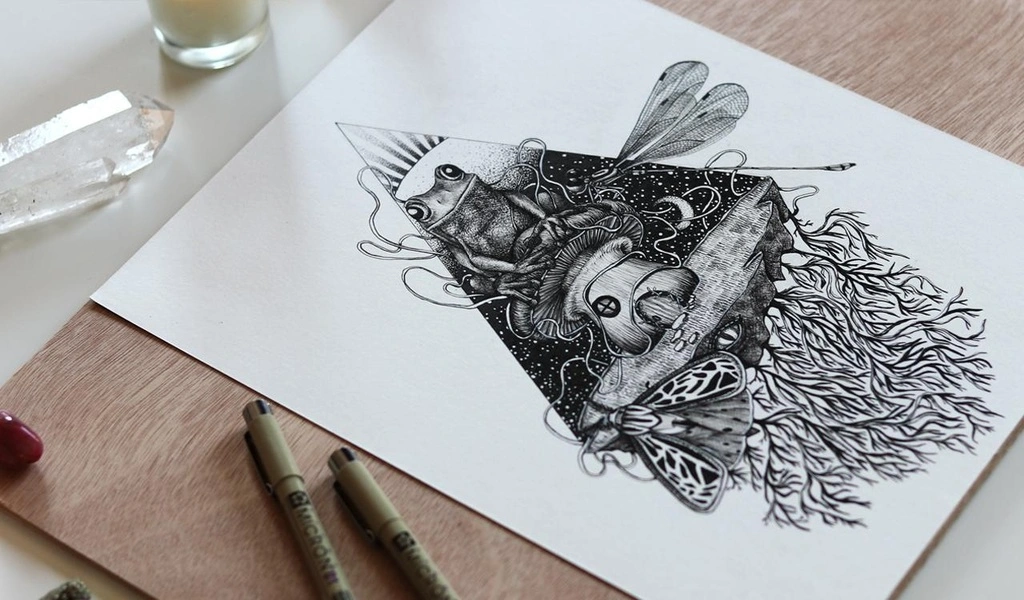Art and Artists
Breathe Life into Drawings: The Ultimate Guide to Effortless Animation Sketching

Animation Sketching – Animation is the art of bringing static images to life. With the advent of digital tools and technologies, this creative discipline has evolved leaps and bounds. Central to this transformation is the craft of animation drawing, an art that, when mastered, can turn rudimentary sketches into full-blown animated sequences teeming with emotion and movement.
The Essence of Good Animation Drawing
At its foundation, animation sketching is about comprehending movement and efficiently communicating it on paper or screen. Ollie Johnston, the great Disney animator, once remarked, “The most important thing is to see how something moves before you animate it.” This represents the significance of observing the world, comprehending science, and applying it to your drawings. Whether it’s the rustling of leaves in the wind or a character’s complex facial expressions, capturing these details distinguishes a good animation from a fantastic one.
Artists have found allies in improved drawing tools in today’s digital environment. XPPen drawing tablets have made a huge impact on them. These tablets, which provide precision and ease of use, allow artists to go deeper into detail, guaranteeing that each sketch is ready for animation. For some, the shift from traditional sketching to tablet use can be intimidating, but with XPPen’s easy interface and natural feel, the journey is easier than ever.
Why Choose XPPen for Animation Sketching?
The Power of Stylus Precision: XPPen tablets come equipped with pressure-sensitive styluses. This ensures that every stroke, whether fine or bold, is captured with utmost accuracy, paving the way for lifelike animations.
User-Friendly Software Integration: XPPen seamlessly integrates with major animation software. This means that artists can directly animate sketches without the hassle of importing or converting files.
Tailored for Artists: Beyond just the technical specifications, XPPen understands the artist’s journey. Features like customizable shortcut buttons, anti-glare screens, and ergonomic designs ensure that artists can work for extended periods without strain.
Expanding Horizons with Advanced Training
Mastering animation sketching isn’t just about having the right tools; it’s also about honing one’s skills. Institutions like the California Institute of the Arts and the Gobelins School of the Image offer dedicated courses in animation, with emphasis on sketching techniques. By blending foundational knowledge with hands-on practice, artists can truly elevate their craft.
Exploring Various Animation Styles
As one delves deeper into the world of animation, one becomes aware of the huge number of styles and techniques available to animators. There’s a world of options, from the conventional hand-drawn approaches that dominated classics like Disney’s “The Little Mermaid” to the cutting-edge 3D animation seen in Pixar’s “Toy Story.” Furthermore, approaches such as stop-motion animation, which mainly relies on real-life models, and rotoscoping, in which artists draw over motion picture film, each have their appeal and obstacles. Each style necessitates a different set of talents, but the base is the same: a solid grasp and proficiency in animation sketching.
The Role of Storyboarding
A storyboard is created before any animation is created. These are visual tales that, like a comic strip, outline the important scenes of an animated sequence or film. The value of storyboarding in animation cannot be overstated. It serves as a blueprint, assures continuity in narrative flow, and allows team members to collaborate. Many artists digitize their storyboards using tools like XPPen tablets, making modifications and iterations more manageable and collaborative.
Practice, Persistence, and Patience
Rome was not built in a day, and neither is animation drawing skill. Learning from mistakes takes hours of effort, multiple revisions, and patience. Aspiring animators should sketch daily, solicit feedback, and be willing to constantly evolve their approaches. Artists can also use networks like Behance and ArtStation to display their work, get recognized, and possibly land job chances at major animation studios.
The Future: Virtual Reality and Augmented Reality in Animation
With the emergence of Virtual Reality (VR) and Augmented Reality (AR), the animation business is on the verge of a revolution. These technologies engage the spectator in the animated world in a way that has never been done before. Instead of simply watching a story, viewers may now participate in it by interacting with the setting and characters. This poses new challenges and opportunities for animators.
Conclusion
Sketching is a dynamic and ever-changing art form. While the essence of expressing motion and emotion remains intact, tools and platforms, such as the innovative XPPen tablets, have broadened artists’ horizons. The animation business is primed for new advancements with the emergence of technology like VR and AR, as well as a greater emphasis on inclusivity. Today’s animators are influencing the future of narrative through dedication, ongoing learning, and accepting change.
Also Check- falcon media marketing






























